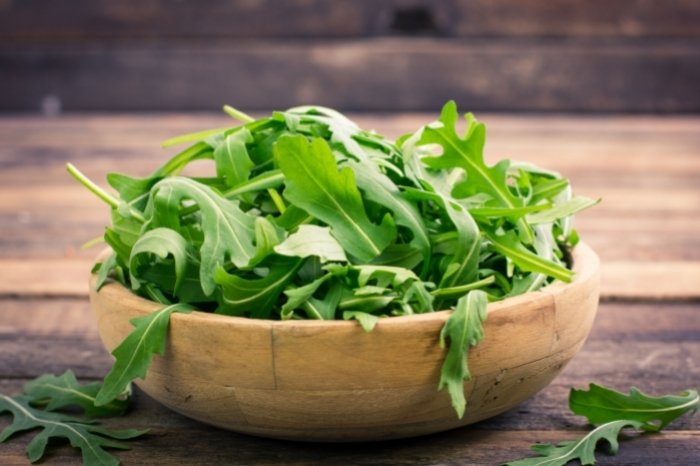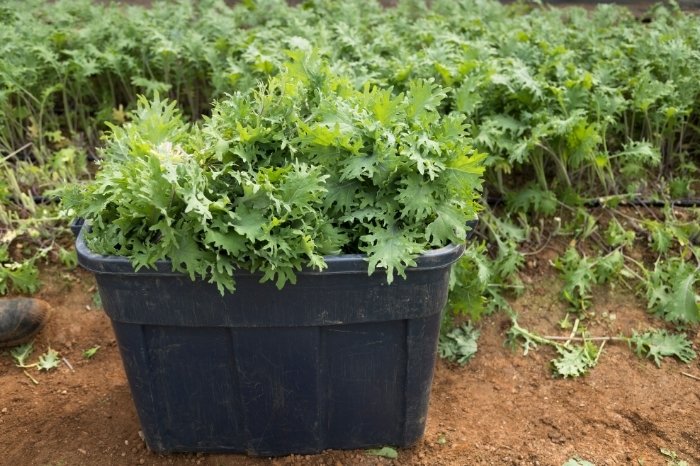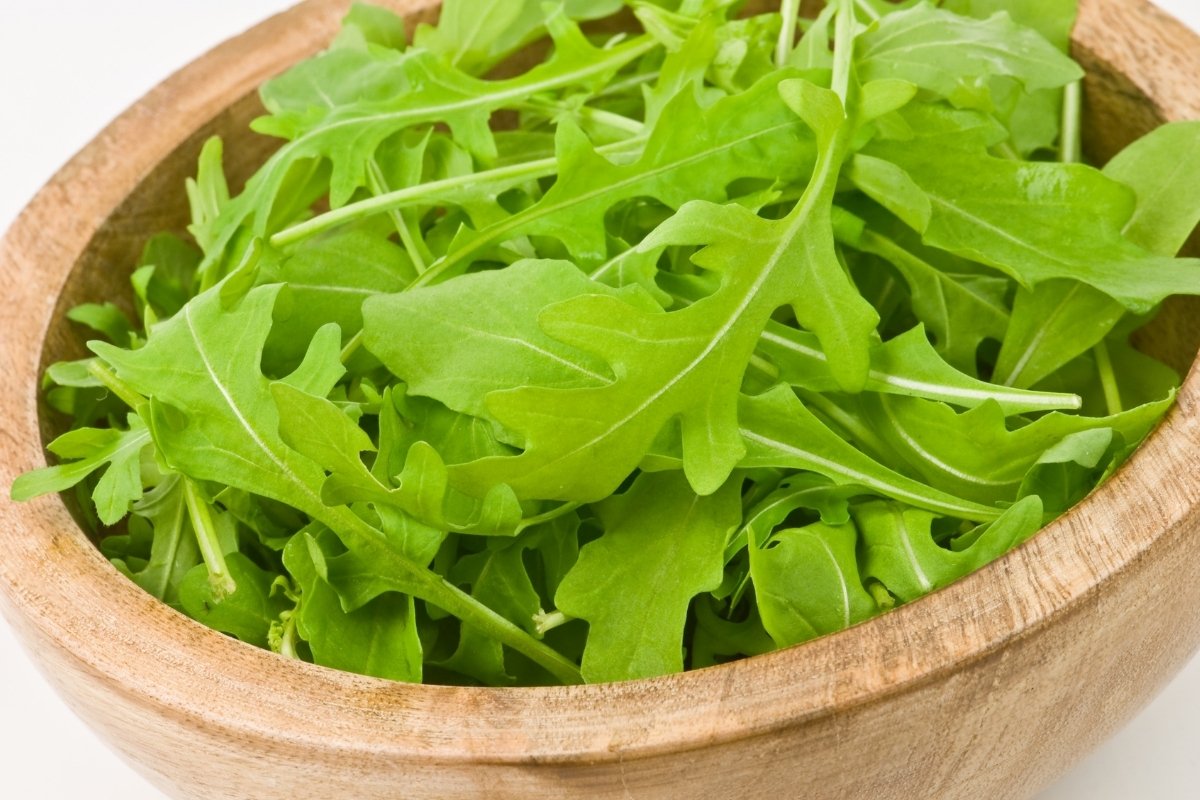Last Updated on January 17, 2023 by Urska
Same old cool-weather leafy greens can get boring, so switch things up and learn when to plant arugula to add a kick to your garden and diet. This deep green, leafy vegetable is nutritiously rich, easy to grow, and versatile when it comes to food combining. You can add a handful to your favorite sandwich, make salads, and even dice it up and sprinkle it as a herb over meals.
Sound delightful? Let’s see when and where you should sow your new favorite veggie.
What’s Arugula And Where Does It Come From
Arugula is a Mediterranean leafy green from the mustard family. It’s closely related to cauliflower, broccoli, and brussels sprouts but doesn’t yield fruit. It’s around 12 inches tall and has dark green leaves, extending 3 to 6 inches in length. The leaves grow in rosettes, giving the arugula a bouquet-like look.
You can find arugula labeled as roquet, garden rocket, or rucola. It’s highly popular in southern Europe and has a special place in Italian cuisine. The taste is unique and not for every palate. It’s nutty, peppery, and slightly bitter. In the US, arugula thrives in USDA Hardiness Zones 3 to 6 and 7 to 11.

How and Where To Plant Arugula For Best Results
You can grow arugula from seeds or get small roots from a nursery. The seeds need approximately 40 days to grow into a plant. The correct time, however, depends on the weather conditions. Nursery plants produce edible leaves in 10 days.
Pick a sunny or partially shadowed part of your garden. Arugula grows well in raised garden beds, pots, and in-ground. Work up some compost in the neutral or slightly acidic soil. A nutrient-rich ground will help you get deep green leaves. A well-draining soil is the best choice.
Plant arugula seeds no more than 1/2 an inch deep into the soil. Sow in rows, leaving an inch between each seed. If you’re planting more than one row, make sure there’s a foot distance between the rows.
Check Out When Do You Harvest Broccoli?
Arugula: When To Plant This Hearty Green
You need to plant arugula in late summer, early fall, or early spring. This plant loves cool weather, so sow your seeds as soon as the ground is workable enough. You can choose to plant new seeds every two weeks for a constant supply of fresh arugula.
The ideal temperature in which arugula thrives is 45 to 65 degrees Fahrenheit. However, when temperatures rise above and the plant is exposed to too much sun, it bolts.
Organic Arugula Sprouting Seeds, 8 Ounces – Non-GMO
Arugula requires frequent watering, or otherwise, it will bolt. Check daily and water as soon as you notice the top inch is dry. Sprinkle grass cuttings around the plant to retain moisture in the soil and prevent weeds at the same time.
If you happen to plant the arugula later in spring, pick a spot that gets shade in the afternoon. When grown at the correct time, arugula requires 6 hours of sunlight. But when the sun is too intense during summer, a prolonged exposure results in a wilted plant.
Read more About When To Plant Cantaloupes – The Perfect Time
When To Harvest Arugula
You can harvest arugula when the leaves get at least 3 inches long. But don’t wait until they’re over 6 inches. The longer, mature leaves have a more intense flavor that can be harder on the palate.
Arugula is ready for harvest around 4 to 7 weeks after planting. The baby leaves have a mild flavor, while the fully grown have that unique kick.
With frequent harvest, you encourage the development of new leaves, delay the bolting, and extend the plant’s life. To correctly pick your leaves, take your garden shears or scissors and cut the outer leaves first. Make sure to cut them at the base of the stem. You can harvest half of the plant but always leave the new baby leaves in the center.

Arugula Flower At End Of Season
In warmer weather and prolonged sun exposure, arugula starts to bolt. This results in the appearance of flowers on the crown of the plant. You can still harvest and eat arugula even after it bolts. But the taste of the leaves becomes too intense, and you might find it repelling. The flowers and buds are also edible and can be used in salads. They, too, have a robust peppery flavor.
Plant the arugula as soon as the ground thaws in spring to prevent bolting. Or you can wait until the hottest summer days have passed. Frequent harvest also delays bolting, so don’t forget your plants!
Click Here to Learn about Do You Know How Fast Does Asparagus Grow?
Health Benefits Of Arugula
Arugula packs many health benefits in a single leaf, and it’s pretty easy to add to your diet. Here’s what you can gain from a single bowl or arugula salad daily:
- Calcium – a vital supplement that’s hard to find in a plant. It helps keep your bones and teeth healthy and strong.
- Vitamin C – you can never have enough of this immune-boosting vitamin.
- Potassium – the supplement responsible for the perfect function of your nerve system.
- Folate – a type of vitamin B essential for pregnant and nursing women.
- Vitamin K – essential for blood clotting and healthy bone tissue.
Can Arugula Be Bad For You?
If you’re taking a blood-thinning medicine, you might want to control your arugula portions. Too much vitamin K (which is abundant in arugula) can suppress the medicine’s work. Consult your medical professional and let them know your diet.
How To Prepare Arugula
Arugula is best consumed fresh in salads, sandwiches, as a side or over already baked pizza. If you find the taste overwhelming you can chop it and sprinkle it over your favorite salad. If you’re willing to experiment, make arugula pesto.
Arugula keeps up for a week in the fridge. As with other greens, you can saute it and add it to pasta, stews, or other meals.
Final Say – When To Plant Arugula
Arugula is a hearty green from the mustard family that needs cool weather. Plant it after the last frost in spring, and you’ll get a fully grown plant in a month. In summer, wait until the temperatures drop to 65℉ or below and sow your seeds. Arugula is easy to grow, works great in salads, and packs a plethora of health benefits.
Mary is a passionate gardener who loves spending her days getting her hands dirty and nurturing her plants. She‘s an avid reader of gardening magazines and is always looking for new ways to make her garden thrive. When not outside tending to her plants, Mary can be found inside reading up on the latest gardening trends, comparing notes with fellow gardeners, and finding the perfect pottery planter for her next planting project.



